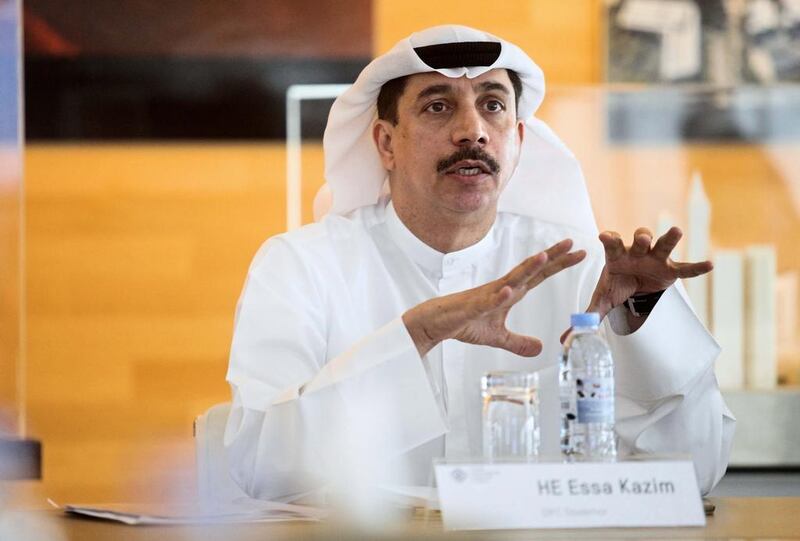The Dubai International Financial Centre is targeting asset management and private banking as growth sectors to help it achieve ambitious expansion goals over the next decade.
The DIFC yesterday announced that it planned to triple in size between now and 2024, aiming for a workforce of 50,000 and 1,000 financial companies, with a big chunk of that growth coming from what it called “deepening the core” activities of the financial centre.
Asset management and private banking were earmarked for expansion – along with banking and capital markets, and reinsurance – as activities that would help to contribute 30 per cent of DIFC’s overall growth in the 10-year period.
Assets under management in the DIFC are forecast to rise to US$250 billion by 2024, from $10.4bn last year, and the balance sheets of member firms to reach $400bn, from the current $65bn.
Essa Kazim, governor of the DIFC, said the markets in asset management and private banking were large enough to sustain DIFC’s growth plans. He envisioned an increase in business from regional family offices and financial institutions as the driver of that growth.
“There is some $7 trillion to $8tn worth of financial assets in the Middle East, but only about $1tn is managed in the region. There is a big market there,” he said.
Mr Kazim said the DIFC was considering further changes in the rules on wealth management and private banking to attract more business.
Abu Dhabi Global Market, the capital’s planned financial free zone, has also identified wealth management and private banking as its initial business focus for its imminent launch.
“It would be good to build a cluster around such financial industries in the UAE. After all we have been able to build two successful airlines here,” said Mr Kazim. Much of the planned growth in the coming decade – about half of the total – would come from DIFC “becoming the hub for the south-south corridor”, said the DIFC.
“Dubai is uniquely positioned at the heart of the south-south corridor for firms looking to serve the Middle East, Africa and South Asia regions,” it said.
The DIFC aims to initiate contacts with key Asian and Middle East banks to attract new business in these sectors, and will seek to attract African banks to “play a role in regional trade and infrastructure” in the middle to longer term.
The growth plan will also aim to “build global relevance” by targeting specialist sectors, in addition to fund management for Asia and the Middle East.
Islamic finance was seen as key to this part of the 10-year plans, which was expected to provide about 20 per cent of the growth.
Mr Kazim said that “continued enhancement of the regulatory and physical infrastructure” of DIFC was an important part of the growth strategy, with the aim of aligning the Dubai Financial Services Authority’s regulatory standards to international standards.
“I am not playing a game of regulatory arbitrage. I will not allow DIFC standards to be lowered to accommodate new business,” said Mr Kazim.
Sheikh Maktoum bin Mohammed, Deputy Ruler of Dubai and president of the DIFC, said: “In the short history of its first 10 years, DIFC has established itself as a gateway to growth and opportunity to the region. Over the next decade, our ambition is to broaden and deepen this role.”
fkane@thenational.ae
Follow The National's Business section on Twitter





